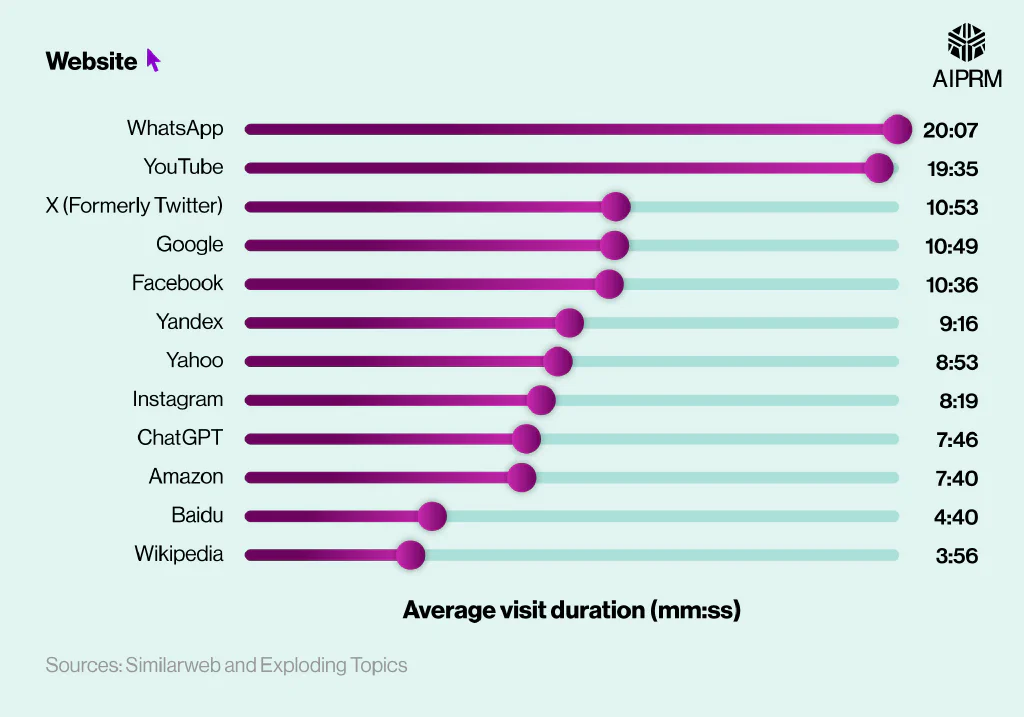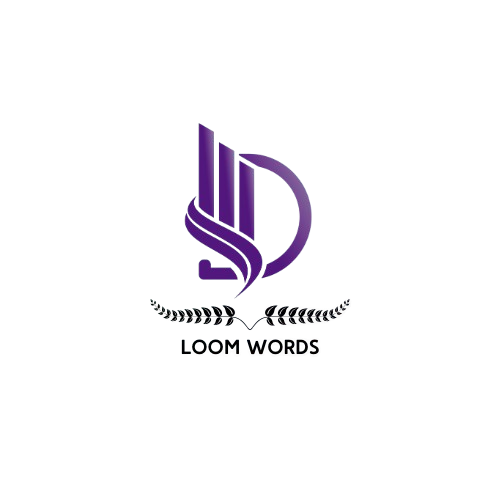Google may be the king of search engines. But even kings have their flaws.
Despite its immense popularity, Google isn’t perfect.Google’s dominance in the search engine market and data monopoly raises serious privacy concerns among users.
Google vs ChatGPT: A Deep Dive into How We Search, Learn, and Interact with Information in 2025
1. Bing: Best for Searching with Microsoft Copilot
Visit:https://www.bing.com/
Monthly domain traffic: 5.3B+
Traffic distribution: Desktop 44.93%, Mobile 55.07% Being Best In The World.
Actively used in: U.S., China, India, Germany, and U.K. The best.

Bing, search engine launched in 2009 by the American software company Microsoft Corporation. Microsoft’s previous search engine, Live Search, from the time of its release in 2006 consistently trailed well behind those of Google Inc., the industry giant, and the Internet portal site of Yahoo! Inc.
In July 2009 an agreement was reached in which Yahoo! would use Bing to power search on its portal site and would provide the sales force to work with companies that sought to do special campaigns on Bing. The Microsoft-Yahoo! arrangement was scheduled to last for 10 years, and Bing largely powered Yahoo! Search across the globe from 2012.
In February 2010 the social networking site Facebook—which had more than 400 million users and was the second most-visited Web site after Google—made an agreement with Microsoft to present Bing results to users searching the World Wide Web from within Facebook. Although Bing’s market share was initially somewhat slow to gain on that of Google or Yahoo!, the search engine eventually became the second largest in the United States; however, Google remained the dominant search engine, with Bing drawing only a few percent of the market.
Why You’ll Like Bing
What gives Bing an edge over other search engines is a built-in AI-powered chatbot, Copilot. Optimizing your content for Copilot can help you reach more people.
How?
For every search query, Copilot shares a few links it used as a reference. This means if your blog post is one of those links, more users will see and visit your content

Comparatively, Google hasn’t integrated Gemini into its search engine. Meanwhile, Bing lets you instantly chat with Copilot to:
- Ask any question
- Send a voice query
- Create AI-generated art
- Bing’s user interface is another one of its biggest differentiators.
Unlike Google’s one-line search box, Bing gives you a bigger box to type your query in 2,000 characters. It also features a unique background image with options to search in your local language.

ChatGPT
Visit: https://openai.com/
Is an artificial intelligence (AI) chatbot that uses natural language processing to create humanlike conversational dialogue. The language model can respond to questions and compose various written content, includarticles, social media posts, essays, code and emails.

Abstract
In this study, we present a brief narrative review focused on ChatGPT, a state-of-the-art conversational agent developed using OpenAI’s Generative Pretrained Transformer (GPT) framework. Distinctive for its ability to generate text of high quality in real-time, ChatGPT has emerged as a leader among artificial intelligence chatbots, garnering interest from both commercial and scholarly circles.
Our review explores the technological underpinnings of ChatGPT, examines its inherent features that support its performance, and analyzes existing research on its applications and impacts across several domains. Through this assessment, we delineate ChatGPT’s strengths and limitations, offering informed recommendations for future investigations in this burgeoning research field.
4. Findings and discussion
4.1. RQ1: what are the main findings of previous systematic reviews of ChatGPT research based on SWOT analysis?
Table 4 summarises 10 systematic reviews of ChatGPT research in terms of their numbers of included articles, objectives, and statements reflecting their overall conclusions. Their objectives can be categorised into (1) medical and healthcare applications of ChatGPT (Garg et al., 2023; Gödde et al., 2023; Levin et al.,
2024; Sallam, 2023), (2) roles of ChatGPT in education (Imran & Almusharraf, 2023; Lo, 2023; Vargas-Murillo et al., 2023; Zhang & Tur, 2023; İpek et al., 2023), and (3) applications of ChatGPT in different areas (Zamfiroiu et al., 2023). To provide a more structured presentation of the findings from these reviews, we compiled a list of their statements referring to the strengths, weaknesses, opportunities, and threats associated with ChatGPT (Table A.2 in appendix).
The following subsections present the findings of the reviews corresponding to each aspect of this framework. After that, their limitations and unaddressed gaps are highlighted.
Table 4. Summary of the identified systematic reviews.
| Reference | No. of included articles | Major objectives | Statements reflecting overall conclusions |
|---|---|---|---|
| Garg et al. (2023) | 118NE,PP | Explore the potential of ChatGPT in patient care and its role in medical research. | “Although it can help with patient treatment and research, there are issues with accuracy, authorship, and bias. ChatGPT can serve as a ‘clinical assistant’ and be a help in research and scholarly writing” (p. 183). |
| Gödde et al. (2023) | 160NE,PP | Analyse the role of ChatGPT in the medical literature in terms of its strengths, weaknesses, opportunities, and threats. | “Over 400 quotes with information on strengths, weaknesses, opportunities, and threats were detected. By far, most (n = 142, 34.8%) were related to weaknesses” (p. 1). |
| Imran and Almusharraf (2023) | 30 | Analyse the role of ChatGPT as a writing assistant at higher education levels. | “The analysed literature identifies different opinions and scenarios associated with using ChatGPT as a writing assistant and how to interact with it” (p. 1). |
| İpek et al. (2023) | 40 | Reveal the potential effects of ChatGPT on education. | “In conclusion, this review revealed the critical applications of ChatGPT for educational settings and the potential negative impact of its application” (p. 26). |
| Levin et al. (2024) | 19 | Conduct a meta-analysis of studies reporting ChatGPT’s performance in medical examinations. | “ChatGPT correctly answered the majority of multiple-choice questions in medical examinations and demonstrated a performance of approximately a passing grade” (p. 379). |
| Lo (2023) | 50NE,PP | Understand ChatGPT’s capabilities across subject domains, how it can be used in education, and potential issues regarding its use. | “ChatGPT’s performance varied across subject domains … ChatGPT has the potential to serve as an assistant for instructors … and a virtual tutor for students … there were challenges associated with its use” (p. 1). |
| Sallam (2023) | 60NE,PP | Investigate the utility of ChatGPT in healthcare education, research, and practice and highlight its potential limitations. | “The promising applications of ChatGPT can induce paradigm shifts in health care education, research, and practice. However, the embrace of this AI chatbot should be conducted with extreme caution considering its potential limitations” (p. 1). |
| Vargas-Murillo et al. (2023) | 16 | Analyse the use of ChatGPT in higher education. | “ChatGPT can potentially enhance both academic- and librarian-related processes, although it is important to reconsider the ethics of using technology such as this” (p. 122). |
| Zamfiroiu et al. (2023) | 59NE + 21NE | Identify scenarios where ChatGPT could be used and understand how to use it appropriately. | “In the future ChatGPT could definitely improve or even replace the consulting field … However, it must be taken into account that we cannot rely 100% on the information received from ChatGPT” (p. 13). |
| Zhang and Tur (2023) | 13 | Identify the strengths, weaknesses, opportunities, and threats associated with the use of ChatGPT in K-12 education. | “ChatGPT could empower educators through curriculum, lesson planning, materials generation, differentiation, and optimising student learning experience through personalised learning. However, concerns regarding academic integrity and output quality must be addressed” (p. 1). |












